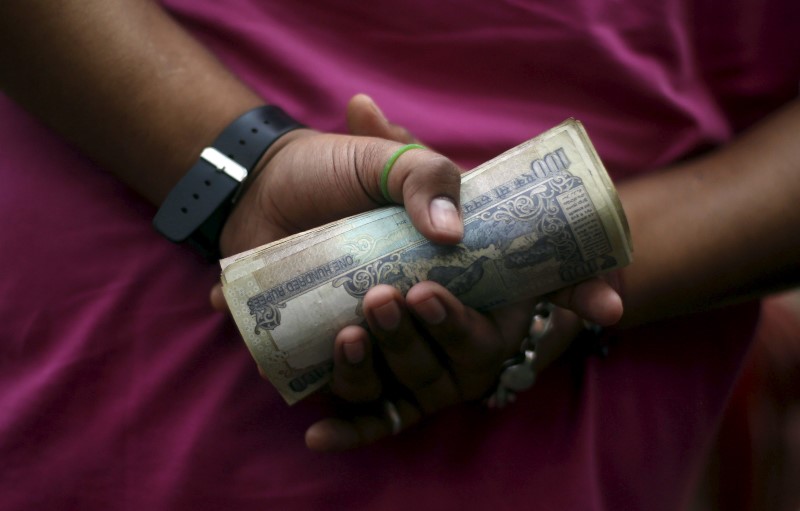In a turn of events this Monday, the Indian rupee failed to sustain its rally following its inclusion in JPMorgan (NYSE:JPM)'s flagship emerging market index, currently trading at a weaker level of 83.1125 against the U.S. dollar, compared to its peak close to 82.80. Despite the temporary surge, economists at Nomura hold a pessimistic stance on the currency, advising that this period should be used to build long USD/INR positions, and have subsequently raised their confidence in these positions to the highest level.
Nomura predicts that passive funds are unlikely to see significant inflows until around June 28, 2024, when the bonds are due for inclusion. The brokerage also advises active fund houses to consider their tracking error limits in light of this. The actual inflows may be less substantial than expected as real money managers monitored by Nomura have already invested an average of 2%-3%.
Potential risks that could further weaken the rupee were identified by Nomura, including an exacerbation of India's current account deficit and the risk of equity outflows. A strengthening dollar and weakening Chinese currency were also cited as potential contributing factors.
Nomura expressed concerns over India's trade deficit potentially widening due to recent developments such as the ban on rice exports and rising oil prices. These factors could increase India's trade deficit by approximately $17 billion annually, according to the brokerage's estimates.
Furthermore, projections from the U.S. Federal Reserve made in September indicate a sustained period of high interest rates which could strengthen USD/CNH and result in a higher USD/Asia, including USD/INR.
The brokerage also anticipates continued pressure on the Chinese yuan due to ongoing equity and bond outflows. This development is expected to contribute further to the weakening of the Indian rupee against the U.S. dollar.
This article was generated with the support of AI and reviewed by an editor. For more information see our T&C.
